Top 10 Mobile Ad Sizes & Formats for 2025 – Boost Your Revenue Today
Publishers often wonder which mobile ad sizes and mobile ad formats are the best for website monetization. This is especially important since we live in a mobile-driven world.
According to the latest Statista data, there were 4.4 billion mobile internet users in 2022 and the number is expected to reach 5.5 billion by 2030.
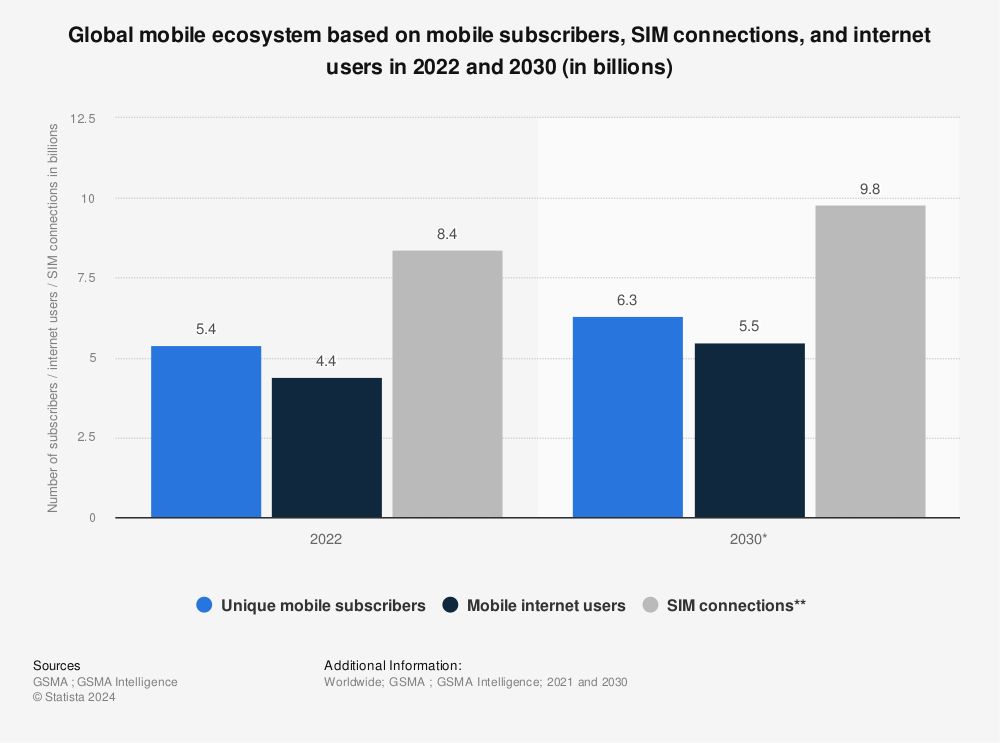
There are many different types of mobile ads, but how do you know which ones will work the best for your website?
We analyzed total impressions from Google Ad Manager, AdSense, Ad Exchange, and our yield group partners across various mobile ad units, including mobile banner sizes, interstitial ad sizes, and video ad formats.
This comprehensive data helped us identify the top-performing mobile ad types for publishers in 2025, ensuring you can focus on the best options for maximizing revenue.
To help you choose the best-performing ad sizes, we’ve identified the 10 most popular mobile ad sizes and ad formats that you should be focusing on in 2025.
Knowing the right mobile ad units and formats can significantly impact your site’s revenue.

300×250 Medium Rectangle
A 300×250 is one of the most popular mobile banner ad sizes in the advertising industry and Setupad clients. This mobile ad size is also one of the standard mobile display ad sizes, making it highly versatile for various campaigns. The 300×250 mobile ad has dimensions with a width of 300 pixels and a height of 250 pixels.
The majority of advertisers design their ad creatives for this ad size. Therefore, publishers can access the largest pool of advertisers with this ad size.
It performs best when placed between paragraphs of text or at the end of an article. It’s also a lightweight ad unit, which means it won’t impact your website’s loading speed.
300×250 Ad Example
Our experts find that the best-performing ad formats for 300×250 ad units are mobile banner ads and mobile interstitial ads. See both examples below.
- Mobile Banner Ad
Mobile banner ads are one of the most popular mobile ad types and mobile banner ads sizes. These standard mobile ad sizes work effectively across all devices. Essentially, this rectangular ad unit that can be either static or animated (also known as an HTML5 ad).
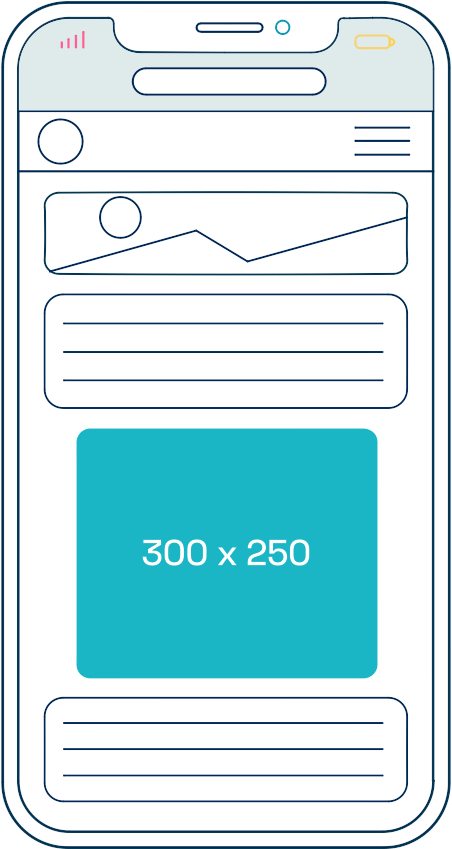
- Mobile Interstitial
Interstitial ads are full-screen ads that fill the entire screen of a mobile device. However, the size of the mobile interstitial ad size can differ, for example, 300×250 or 300×600.
From our experience, interstitial ads tend to generate high eCPMs and CTRs for publishers. Our recent case study showed that web interstitial ads increased the publisher’s ad revenue by 42%.
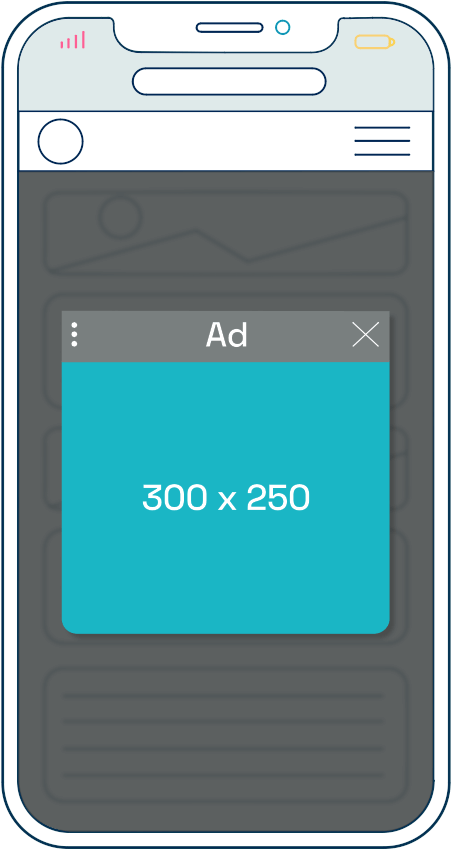
Related Article: What are Interstitial Ads and Should You Use Them?
336×280 Large Rectangle
The 336×280 ad size is a large mobile banner size and one of the most commonly used mobile banner ads sizes in the industry.
Many sources claim that the IAB has delisted this ad size; however, major SSPs, like GoogleAdx, Magnite, and AdForm still use it, and it’s one of the most popular ad sizes in the industry.
This ad size is similar to a 300×250 medium rectangle. Hence, 336×280 also works best when placed between paragraphs of text or at the end of the article.
336×280 Ad Example
- Mobile Banner Ad
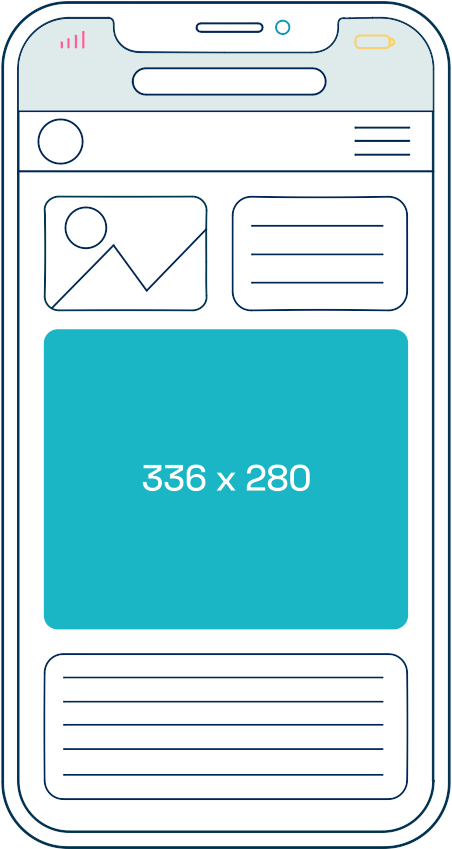
- Mobile Interstitial
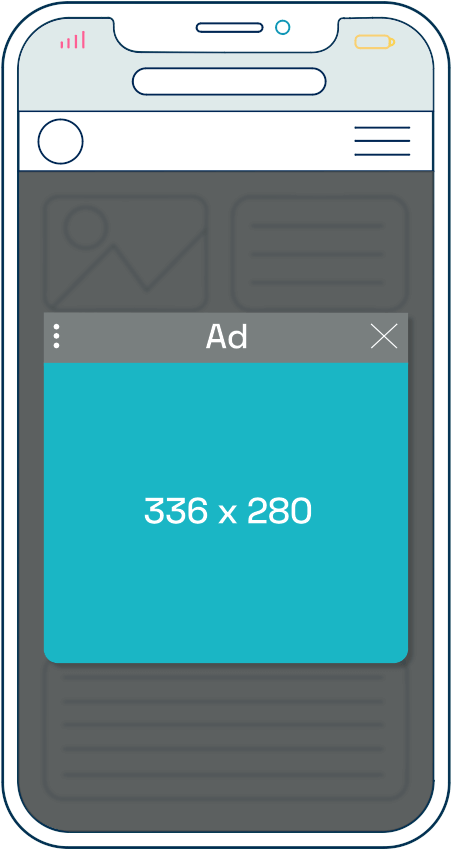
320×50 Mobile Leaderboard Ads
A 320×50 ad is a standard mobile display ad size and one of the most common mobile banner sizes. There are many 320×50 banner ad examples showing its effectiveness.
Mobile leaderboard, also known as mobile banner, is one of the most popular ad sizes for mobile. It’s designed to fit the width of the mobile screen (e.g., iPhone, Android, Google Pixel).
320×50 Ad Example
The most popular 320×50 ad example is a mobile anchor ad, an overlay ad that remains in view as the user scrolls through the page. Therefore, this ad unit has a very high ad viewability rate.
- Mobile Anchor Ad
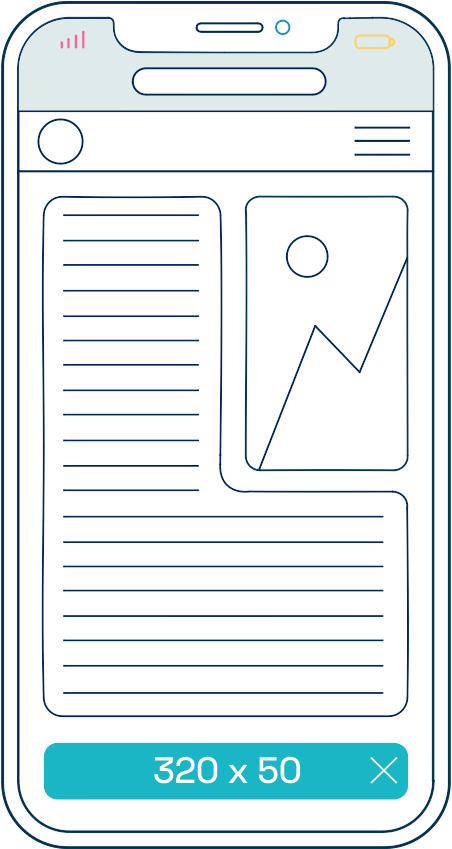
320×100 Large Mobile Leaderboard
The 320×100 ad size is one of the standard mobile banner sizes. As a mobile website banner size, it’s twice the height of the 320×50, offering more visibility. A 320×100 is quite a small mobile ad size but is known as a large mobile leaderboard.
It is twice the height of the standard mobile leaderboard. Like its smaller counterpart, it has a great ad viewability rate and performs well across mobile devices.
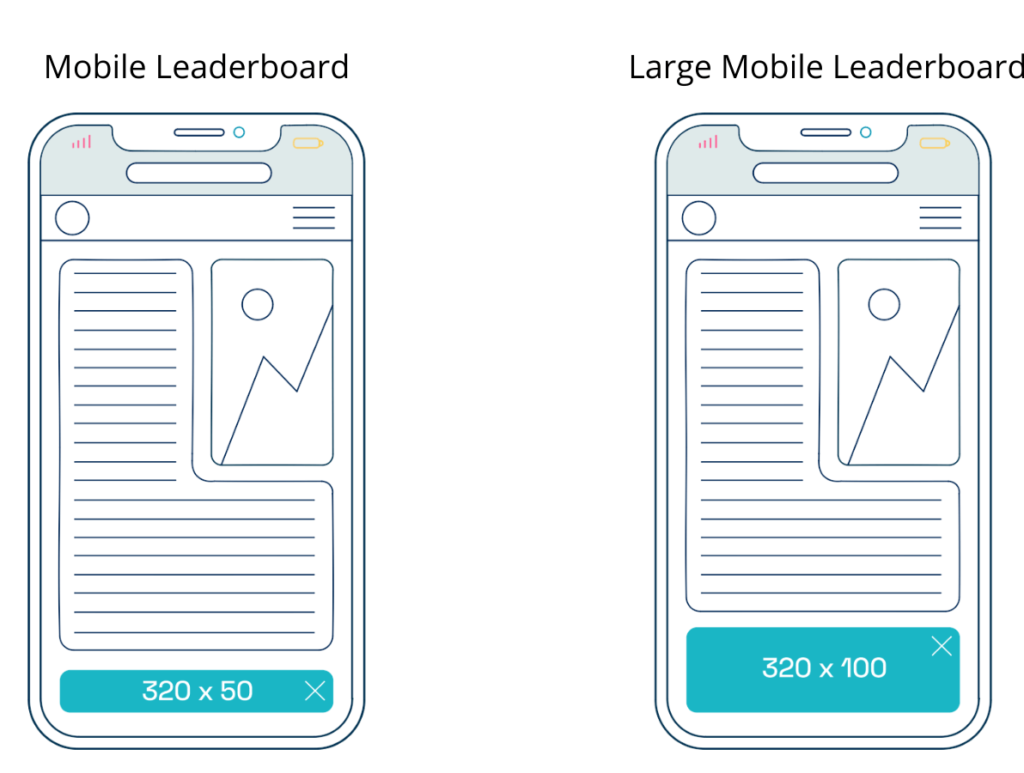
320×100 Ad Example
- Mobile Anchor Ad
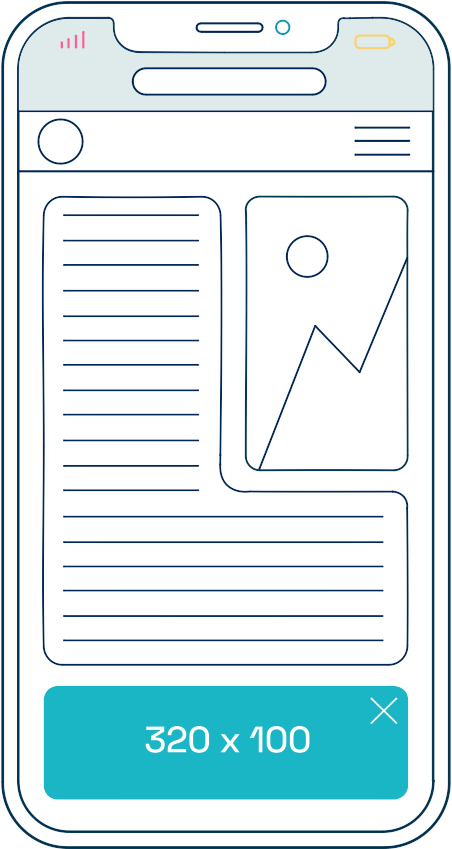
336×336 Square
The 336×336 ad size is larger than the typical rectangle ads and has gained popularity for being visually striking.
336×336 Ad Example
- Mobile Banner Ad: These larger ads perform well in content-rich environments, where users are likely to engage with larger ad units.
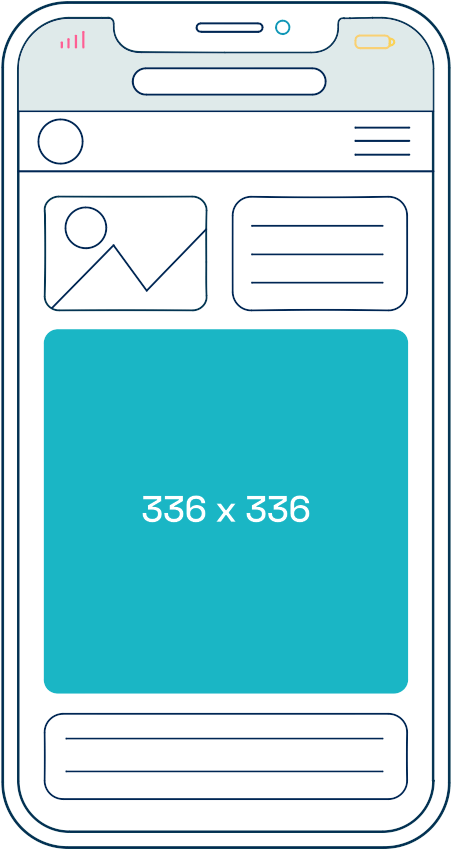
300×600 Double Rectangle
A 300×600 ad is called a double rectangle because it covers most of the mobile screen. It has dimensions of 300 pixels in width by 600 pixels in height. It’s distinct from all other mobile ad sizes because of its tallness.
This ad size isn’t as popular as the other ones in this list but it is one of the fastest-growing ad sizes by impressions.
It’s commonly called “half page” because it covers most of the mobile’s screen guarantees to draw users’ attention to the ad.
300×600 Ad Example
- Mobile Banner Ad – this larger unit is often chosen by premium advertisers looking to capture user attention.
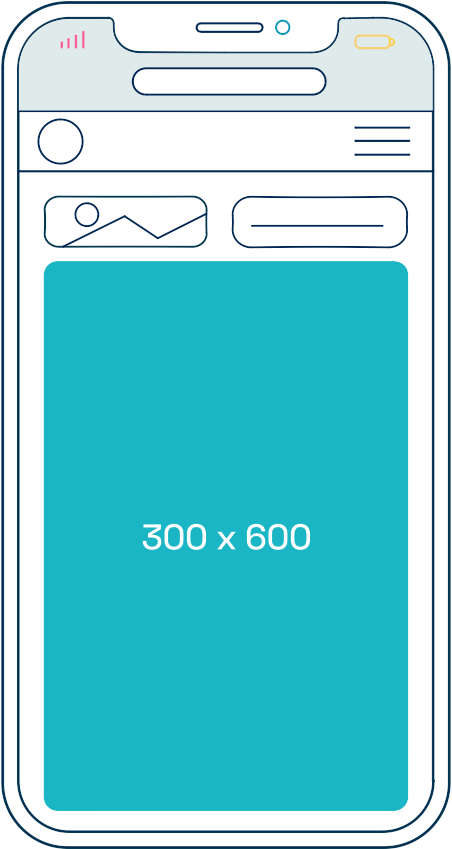
- Mobile Interstitial – one of the best mobile banner ads for engagement on mobile screens.
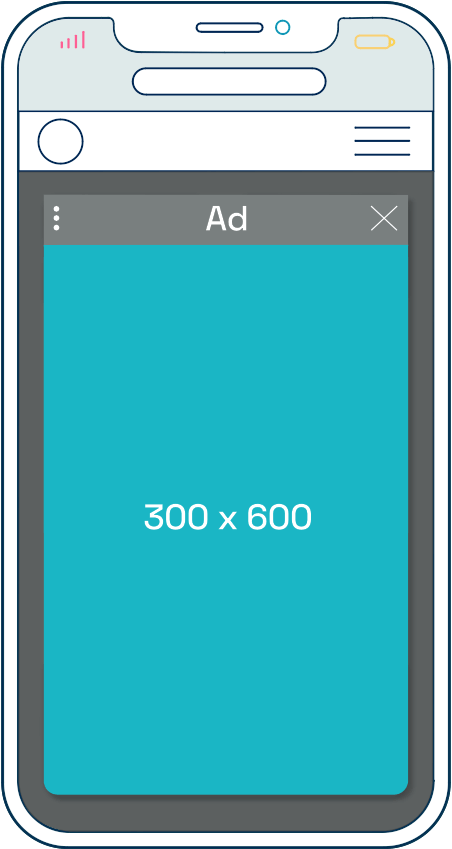
360×300 Medium Rectangle
A 360×300 ad unit is 360 pixels wide and 300 pixels tall. For many publishers, this ad size delivers the best results and has even been dubbed the most popular ad size in Google AdX.
One possible reason why this size performs so well is that it’s not only popular on mobile but on desktop as well. Some advertisers don’t choose whether they want to be shown only on desktop/mobile/tablet. And yet, this ad size is popular on all devices.
360×300 Ad Example
- Mobile Banner Ad
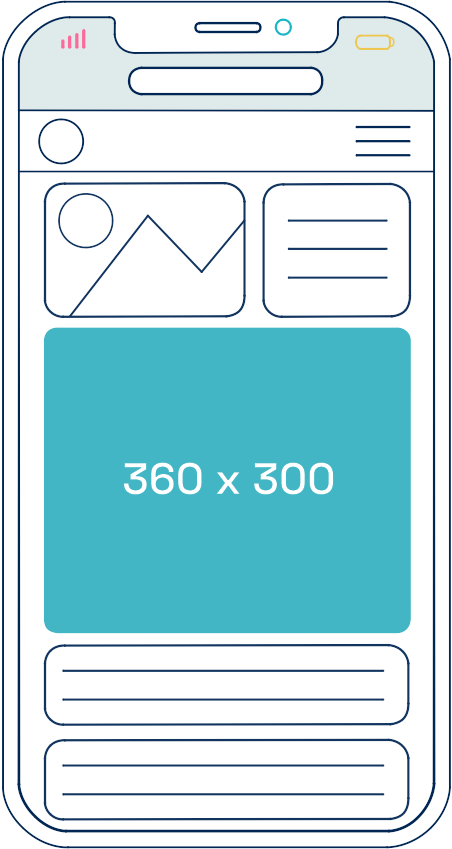
360×120 Mobile Leaderboard
A 360×120 ad unit is 360 pixels wide and 120 pixels tall. This ad size is typically used for banner ads on mobile devices, often appearing at the top or bottom of the screen.
Mobile Leaderboard is designed to be unobtrusive yet still visible enough to catch the viewer’s attention.
360×120 Ad Example
- Mobile Banner Ad
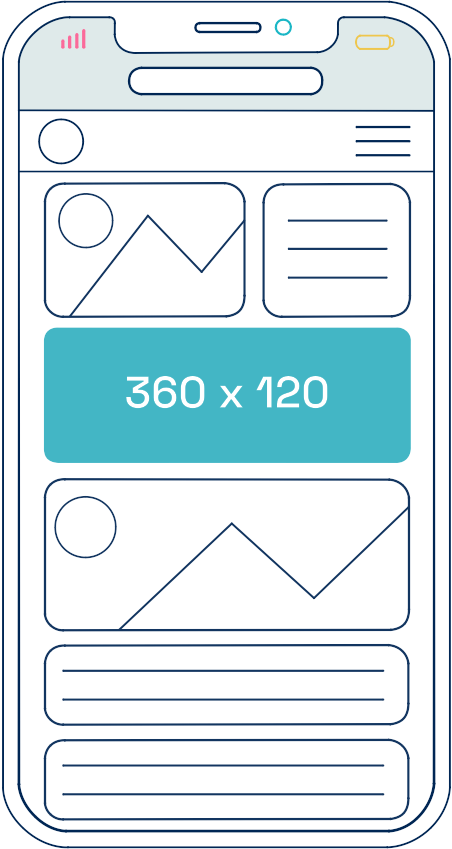
Bonus Sizes
320 x 480 Display Ads
A 320×480 ad unit is 320 pixels wide and 480 pixels tall. This ad size isn’t as popular as other standard banner sizes for mobile. However, it’s sometimes used for rich media ads, such as expandables and interstitials, mobile apps, and games.
320×480 Ad Example
- Mobile Expandable Ad
Expandable ads are rich media ads that expand when users click or hover on them. After some time, the ad will retract back. They’re popular in both mobile web and app environments.
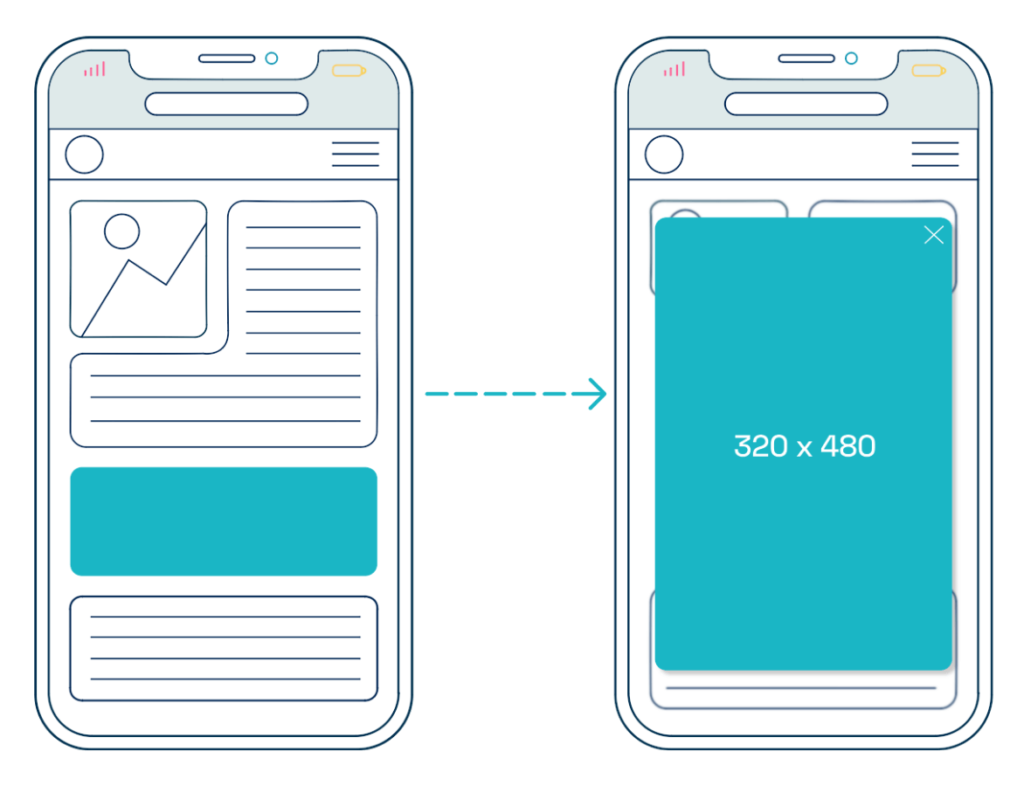
320×180 Video Ads
320×180 video ad size is 320 pixels wide and 180 pixels tall. It has a 16:9 aspect ratio, which, alongside 4:3, is the most popular aspect ratio for video ads.
This ad size is usually chosen automatically upon ad delivery on mobile devices. Advertisers can upload higher resolution video files, typically in the default formats like: 640×480, 640×360, or 1920×1080.
Sophisticated ad platforms, like Google Ad Manager, then transcode these video files into smaller versions to fit different devices, apps, and video players in the best way possible. Therefore, for mobile devices, the actual video size is 320×180.
320×180 Ad Example
- Video Instream Ad
Instream video ads are either pre-roll, mid-roll, or post-roll ad placements within the video. There has to be video content on your mobile site for this placement to work.
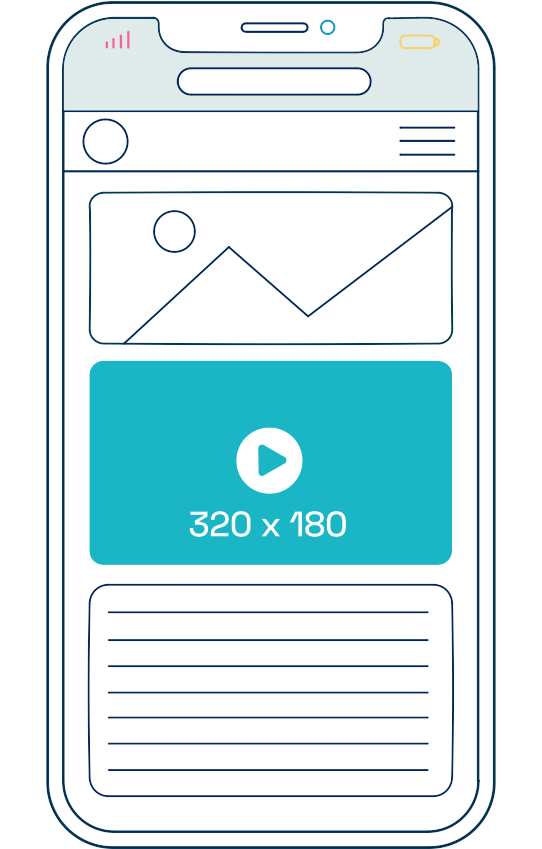

Lastly…
It’s important to consider where to position your ad placements so they don’t cause accidental clicks or lead to a bad user experience.
Our experts help publishers find the most well-performing ad sizes and ad formats for their websites and optimize them to reach maximum ad revenue.
Sign up today and unlock your full monetization potential!


